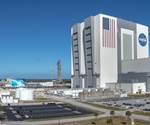Boeing-built X-37B launches in second mission for U.S. Space Force
The May 17 launch is the sixth mission for the autonomous spaceplane, and includes added payload capacity for support a variety of experiments.

Source | Boeing
On May 17, the Boeing-built X-37B autonomous spaceplane launched on top of a United Launch Alliance Atlas V rocket, the sixth mission for the vehicle.
Boeing (Chicago, Ill., U.S.) is the prime contractor for the X-37B spaceplane and facilitates the integration of vehicle experiments to ensure they receive required power, thermal and data services. Boeing also works to identify future reusable platform experiment opportunities on each mission.
The X-37B’s sixth mission is the first to use a service module with additional payload capability to support a variety of experiments for multiple government partners. For example, the mission will deploy FalconSAT-8, a small satellite developed by the U.S. Air Force Academy and sponsored by the Air Force Research Laboratory (AFRL), to conduct experiments on orbit. Further, two NASA experiments will study the impact of radiation and other space effects on certain materials and seeds used to grow food. Another experiment by the Naval Research Laboratory will transform solar power into radio frequency microwave energy which could then be transmitted to the ground. In addition, the mission will test reusable space vehicle technologies.
The X-37B first launched in April 2010. Originally designed for missions of 270 days duration, the X-37B has set endurance records during each of its five previous flights, Boeing reports. Most recently, X-37B spent 780 days on orbit before returning to Earth in October 2019.
“The X-37B has shifted the paradigm and redefined efficiency in space development,” says Jim Chilton, Boeing Space and Launch senior vice president. “The rapid technology advancements enabled by the program will benefit the entire space community and influence the next generation of spacecraft design.”
The X-37B program is a partnership between the Department of the Air Force Rapid Capabilities Office and the United States Space Force. Boeing program management, engineering, test and mission support functions for the Orbital Test Vehicle (OTV) program are conducted at Boeing sites in Southern California and Florida.
Related Content
-
Automated robotic NDT enhances capabilities for composites
Kineco Kaman Composites India uses a bespoke Fill Accubot ultrasonic testing system to boost inspection efficiency and productivity.
-
Nanomaterials optimize performance of space-ready carbon fiber composite panels
A recent ESA project led by Adamant Composites aimed to mature nanomaterial-enhanced CFRP for lighter weight, more thermally and electrically conductive materials for manufacturing satellite structures.
-
High-temperature composite 3D printing facilitates design, manufacture of deployable space structures
Opterus R&D employs an AON3D printer and OOA prepregs to build the tooling, prototypes and end-use versions of its foldable CFRP satellite structures.

.jpg;width=70;height=70;mode=crop)














